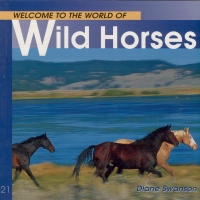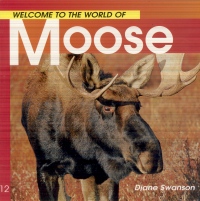| ________________
CM . . .
. Volume XVI Number 11. . . .November 13, 2009
excerpt:
Welcome to the World of Wild Horses and Welcome to the World of Moose are two of more than twenty titles in the "Welcome to the World of..." series by Diane Swanson. This popular series invites children to explore wildlife through factual information written in a style that provides engaging descriptions, fascinating facts and coloured photographs. Young readers and researchers in grades two through six will find both books equally appealing. The excellent, well-captioned photography captures a wealth of information about the topics discussed in the text. The text is generally easy to read and is written in a style that will hold children's interest.
Sentences, such as "Foals born on Sable Island off Canada's east coast can thank children for their home" from Welcome to the World of Wild Horses and "A male moose, called a bull, can weigh up to 800 kilograms (1760 pounds). He can grow so tall his shoulders stand higher than a doorway" from Welcome to the World of Moose, illustrate how the author cleverly grabs the reader's attention and how she crafts the information to match the level of understanding of young readers.
Recommended. Janice Foster is a recently retired teacher and teacher librarian in Winnipeg, MB.
To comment
on this title or this review, send mail to cm@umanitoba.ca.
Copyright © the Manitoba Library Association. Reproduction for personal
use is permitted only if this copyright notice is maintained. Any
other reproduction is prohibited without permission.
NEXT REVIEW |
TABLE OF CONTENTS FOR THIS ISSUE
- November 13, 2009.
AUTHORS |
TITLES |
MEDIA REVIEWS |
PROFILES |
BACK ISSUES |
SEARCH |
CMARCHIVE |
HOME |

